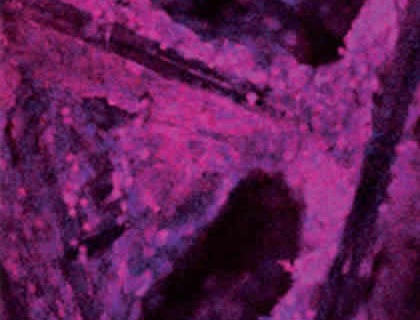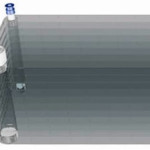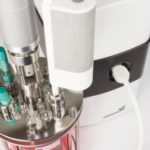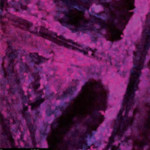
Identifying Options for Stem Cell Based Therapy Scale-up
A Guest Blog by Authors:
Matthieu Egloff, Product Manager at ATMI LifeSciences
Jose Castillo, Global Cell Culture Director at ATMI LifeSciences
Cell-based therapies are gearing up to have extensive impact on the healthcare field in coming years. With a promise for treating various diseases, and long-term conditions like heart disease and metabolic disorders, stem cell therapies are gaining valid appreciation as a viable alternative to traditional methods. In fact, the overall U.S. market for stem cell products is predicted to reach as much as $6 billion by 2020, according to research from Robin Young Consulting.

In order to capitalize on the potential of these therapies, there must be efficient methods for growing the adherent stem cells necessary for developing subsequent treatments. In the simplest terms, a proper surface is required that enables cell growth and harvest. In the lab phase, the focus is on producing the expected cell without much concern over cost or volume. However, when moving to a larger scale, cost becomes a significant issue, driving the need for manufacturing technology with an emphasis on safety, reproducibility and adherence to GMP standards.
To decipher between manufacturing options, it is important to note whether cells are being grown for autologous or allogeneic therapies. Autologous therapies are based on the patient’s own stem cells, so batches remain the same size, however multiple batches must be scaled out. In allogeneic therapies, all patients receive the cells from a donor, so batches are inherently larger and require the process to be scaled up through more surface area. Still, both processes raise practical challenges for the development of a commercially viable manufacturing process.
Scaling up adherent stem cell production
A stem cell culture system must offer integrity, while maintaining and controlling the quality of the cells; it must also be possible to harvest and recover the cells. Scaling up from research and development to an industrial process requires an ability to control the physicochemical parameters, minimize the change in the cell surface, monitor cell density and harvest the cells.
At present there are three main options for scaling-up adherent cell production:
- Multiple or stacked 2-D surface-based systems
- Microcarriers in stirred tank bioreactors
- 3-D scaffold technology to hold and harvest the cells
Scale-up is not as simple as merely providing a larger surface area. Altering the surface and consequently changing the niche environment where the cells are grown can have a big impact on cell behavior; it is important to prevent the cells from making unwanted differentiations. Many factors can impact the cells:
- Physicochemical environment (including pH and dissolved oxygen)
- Shear stress
- Concentration of metabolites within the culture
- Surface composition/geometry
- Cell density
2-D surface-based systems

A multiple 2-D surface-based system, such as the Integrity® Xpansion™ multiplate bioreactor from ATMI®, offers stacked, flat-plate surfaces made out of hydrophilized polystyrene. The plates mimic multitray stacks used in the lab on a larger scale, enabling the operator to condense multiple devices in one single container. The closed system allows stem cell expansion with fewer operations needed. The gas exchange happens in a central column (rather than between plates) to reduce the footprint, with channels along the plates through which the medium circulates. All the critical parameters of temperature, pH and dissolved oxygen levels are continuously monitored and controlled. Holographic microscopy is then used to study the morphology of the cells and enable cell density to be calculated. The harvesting of the cells is also straightforward, using a solution of an enzyme, such as trypsin, to separate the cells from the surface and prepare them for concentration and washing.
With all this considered, multiplate-based technologies are often the most optimal solution on the market for both large autologous batches and the small allogenic batches, which generally amount to a billion cells per batch.
Microcarrier systems

Microcarriers are the most commonly used large-scale technology where cells are grown suspended in culture medium within a stirred tank bioreactor. There are many stirred tank bioreactors available on the market from Millipore and Sartorius; ATMI offers the PadReactorTM system. However, not all stirred tanks are suitable for use with microcarriers. Due to their delicate nature, it is imperative that the culture be agitated very smoothly and gently so the microbeads do not break and shear stress is minimized. To address these requirements, ATMI designed its PadReactor system to provide efficient mixing with minimal agitation. Its paddle-based mixing technology offers a slower, gentler agitation.
While microbeads represent a solution for large-scale production, process development and cell observation is complex. The agitation required (even at a small scale) could complicate extrapolation on a larger scale and may lead to high shear stress, incompatible with fragile cells like stem cells. In addition, even though stem cells can be run in a 200L bioreactor, it is necessary to have gone through the scale-up steps, with runs at 20L and 50L for seeding and passages. The final stage — harvesting cells — is also difficult because a sophisticated and gentle purification step becomes essential to separate the cells from the beads without damaging or changing them.
3-D surface and fixed-bed bioreactors

Another alternative for adherent cell growth is a fixed-bed or packed-bed bioreactor, such as the iCELLis® bioreactor from ATMI, which offers a 3-D scaffold structure using a specific material such as nonwoven microfibers, a biopolymer or a hydrogel. The cells are entrapped in a fixed bed, providing an efficient growth environment for the cells. However, its 3-D nature introduces even greater possibility that the morphology of the stem cells will be different, so a significant amount of development is required to ensure the final production process is both robust and well defined.
It has been proven that cells grow in hollow fiber-based systems, like the Quantum bioreactor from Terumo, which limits shear stress. Packed beds offer great advantages over stirred tanks for cells that are particularly sensitive to shear stress.
Though they are easy to operate, the packed bed bioreactor cartridges can be expensive, limited in scale, and because the surface changes from 2-D to 3-D, the cells may behave differently. However, biopolymer, hydrogel and innovative scaffolds may be the future innovation necessary to solving the drawbacks associated with future allogeneic therapy and large stem cell expansion.
Choosing the best option
Overall, the scale-up from R&D to industrial production must preserve the integrity and quality of the cells. It is important to control the physicochemical parameters, minimize change in the cell surface and monitor cell density. The process must meet GMP standards within a closed system, be reproducible and have minimal operator intervention required.
When choosing the optimal cell culture technology, it is important to ask:
- What are the critical parameters needing to be controlled (shear stress, pH, dissolved oxygen and cell density (mandatory with fragile cells such as stem cells)?
- What change can be implemented without disturbing cell quality?
- What is the scale of batch?
- What are the timeline and resources available to develop the commercial process?
Bioreactors compared to standard multi-tray stacks offer the possibility to enable regulation of the cell culture and, as a result, increase the process reproducibility, while providing additional information supporting quality control. Cell density monitoring could be critical, particularly in the case of autologous therapy where each batch is different.
When cells are qualified after being cultivated on a specific environment, changing this environment could lead to intense quality and validation assays. Multiplate bioreactors provide an easy solution to scale-up standard multitray stacks by offering a similar technology.
On a more limited scale, for autologous production of millions of cells, multi-tray stacks can be used. A multiplate bioreactor will probably be more appropriate for mid-scale production (hundreds of millions of cells per batch). When a very large number of cells are required (hundreds of billions of cells per batch), microbeads in suspension or a fixed bed is likely the best option.
For future allogeneic therapy where volume requirements are much larger, using microcarriers in a stirred tank bioreactor could, in the long run, be the best solution. An intensive process development program would be essential to ensure that the stem cells grown remain substantially the same as those made in the lab, and that neither the changed microenvironment or the harvesting process affect the final product. Packed-bed technologies would be even more efficient, but innovative and specific scaffolds must be developed if they are to become a practical solution. Both options require a long development timeline and multiple resources. A mixed scale-up and scale-out process using the Xpansion system might offer a route to push forward clinical development and early commercialization while more efficient large-scale technologies are being investigated.
To learn more about the iCELLis technology, please click here
To learn more about the PadReactor technology, please click here
To learn more about the Xpansion technology, please click here
ATMI, Integrity, Xpansion, iCELLis and PadReactor are trademarks or registered trademarks in the U.S., other countries or both. Other names are trademarks of their respective companies.